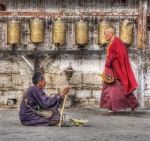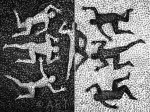HDR is rapidly becoming more mainstream. I recently met Trey Ratcliff (http://www.stuckincustoms.com) in Tampa and I’m seeing more and more articles on the technique in mainstream photo magazines. For Canon shooters (sorry Nikon folks, but these techniques may likely work for you too!), I am going to post my workflow for taking and processing HDR images.
First of all, on most of the Canon models except for the 1D and 1Ds, the camera is limited to 3 exposures for AEB (automatic exposure bracketing). While this is good for most images, there are times where a wider range might be desirable. So, I pre-set and register a -2 stop (plus on shot right on the proper exposure!) AEB on the C1 setting of my 5D and 7D and a +3 stop AEB on C2. I do this by setting up the camera for ISO 100, AV mode, f/8 on the lens and then AEB setting the highest bracketed shot at the 0 setting on the dial by adjusting the exposure compensation. I also set the camera for rapid fire. I then use the menu to register this to Custom setting 1 (the C1 on the mode dial on the top left of the camera). I change the AEB range by changing the exposure compensation dial to begin at 1 stop over the 0 point and register this setting to C2. If I need more or less aperature, it is easy to quickly change these settings on the fly and re-register them.
When shooting, I line up my shot, turn the dial to C1 and use a wireless remote to fire off three shots, then turn the dial to C2 and fire 3 more – voila! a 6 exposure range! I may adjust this range to favor underexposing instead of more shots overexposing, depending upon the scene I’m photographing.
Once I return home, I transfer the RAW images into my computer backup drives (of course I’m shooting RAW!). I then use Lightroom to select the range of RAW images for each shot (and may even do some minor white balance correcting), then I select Export and export the range of images into Photomatix or HDRShop – more often than not, I transfer them as JPGs, but TIFs are fine too!
Once in the HDR software – I tonemap the image to my liking, then process it and save it. Now, I go back into Lightroom and transfer the original RAW images into Photoshop by selecting Edit in Photoshop in layers. This will transfer the images into one project as individual layers. I then bring in the tonemapped image, copy and paste it on top of the layers. Finally, I apply layer maps and selectively adjust the tonemapped image as appropriate from the original RAW images – generally light and darker areas, and remove subject movement, if necessary. At this stage, the adjustments are very subjective.
Once I am done adjusting and flattening the image, I may bring it into a plugin such as Topaz Adjust or Phototools, or apply a curve to the final image, sharpen, size and convert it to an sRGB if it is destined for the web. Again, at this point it is highly subjective and often I will try different processes on it until I get something that I like.
Finally, RAW images alone also contain more dynamic range than can be displayed on a normal monitor or in print and sometimes a single RAW image processed in Photomatix or other software can benefit and that is how the image on this article was done!




